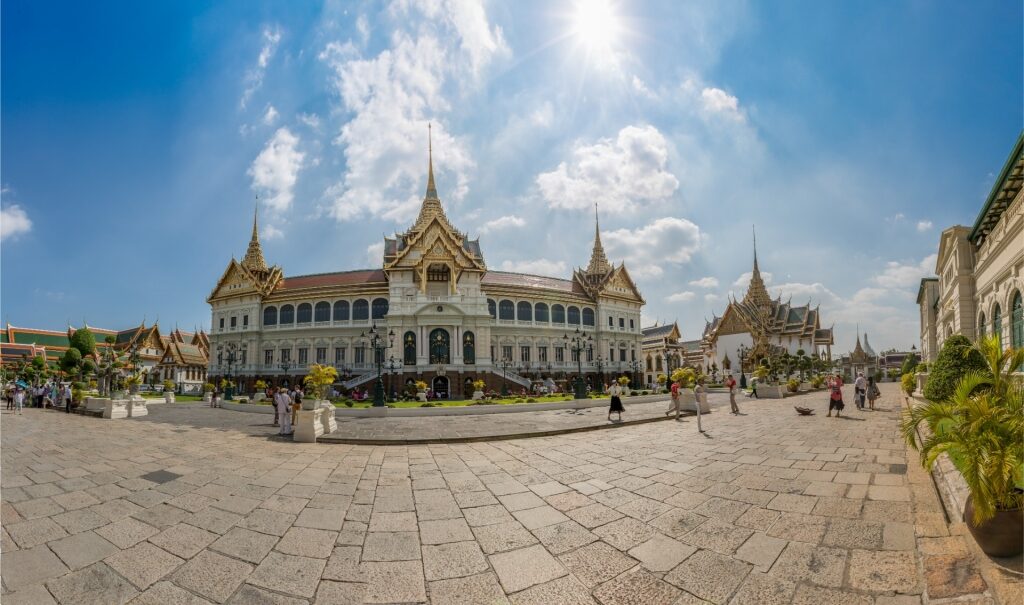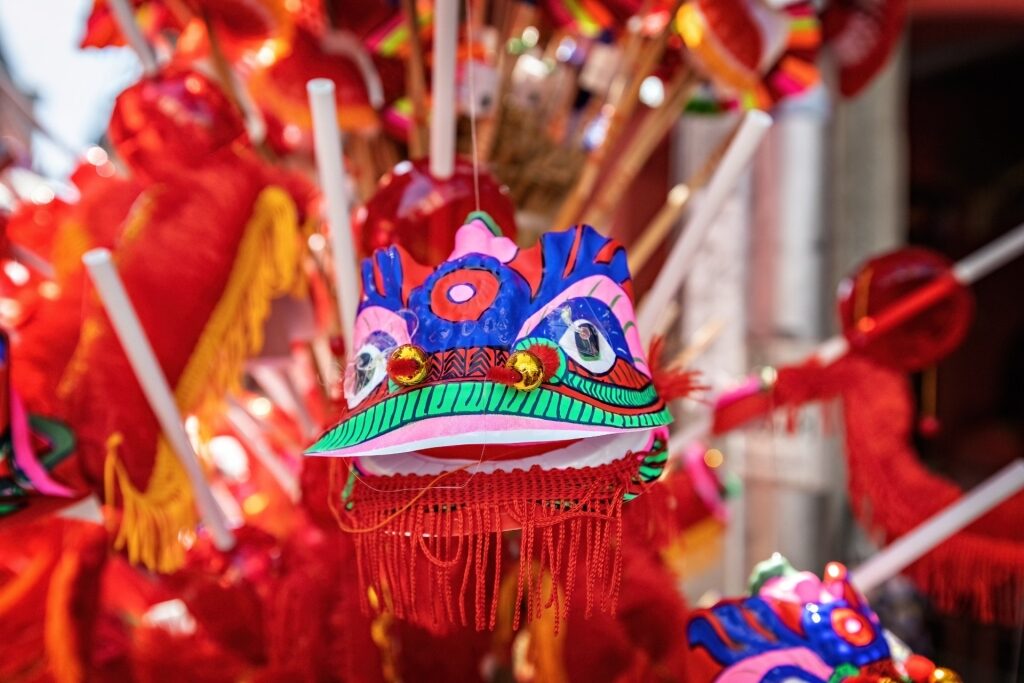The best time to visit Bangkok is between November and April for fine, sunny days and lower humidity. May to October brings the monsoon season, with intense humidity and heavy rain.
Bangkok, though, is a year-round city. The Thai capital, which lies on the Chao Phraya River, inland from the northern shore of the Gulf of Thailand, has a packed cultural calendar and more attractions than you’ll ever find time to visit, from temples and palaces to food courts and floating markets. Every month of the year brings a festival of some kind, so when to visit is really a matter of what you’re looking to experience.
Visiting Bangkok by Season
Summer

Grand Palace
June, July, and August is the hot, rainy season in Bangkok. June is one of the hottest months of the year, with average daily temperatures of 86°F (30.2°C).
By August, the monsoon is in full force, with an average of 8.6 inches (220 mm) of rain falling over 20 days, although the temperature is marginally cooler than June, averaging 85°F (29.6°C).
Fall
Heavy rain continues through September and October, but by November, temperatures have reduced to an average of 84°F (28.9°C). Rainfall peaks in September, which sees on average 13.1 inches (335mm), but this has dropped to 1.9 inches (50mm) by November as the rainy season comes to an end and finer days are ushered in.
Early November can be a good time to go to Bangkok as it’s still shoulder season, before the winter peak. If you’re here for November’s full moon, you can witness the beautiful Loy Krathong ceremony. Locals float boats made from banana leaves, each one carrying flickering candles, down the Chao Phraya River and the city’s canals.
Winter
Winter is peak season and is the best time to go to Bangkok, all the more so if you’re combining your visit with beach time on Thai islands like Phuket and Ko Samui. December is the coolest month of the year, all things being relative, with average daily temperatures of 82°F (27.7°C). From now to February, the city is busy with visitors and it’s cool enough in the evenings to sit outside or explore the night markets.

Chinatown
Although Thailand is a Buddhist country, you’ll come across colorful Chinese New Year celebrations of lion dances and dragon parades in January or February, depending on when Lunar New Year falls. Christmas is also a time for light displays and colorful decorations, with fireworks fizzing through the skies on New Year’s Eve.
Read: Best Street Food in Bangkok
Spring
March and April are near-perfect months to go to Bangkok before the heavy monsoon rains of May arrive. Rainfall is still low, with March seeing just 1.5 inches (40mm). By May, though, the heat and humidity are intense. May can be a draining time to travel, with a daily average of 87.8°F (31°C) and frequent rain showers; on average, 9.8 inches (250 mm) of rain falls over the month.
If you’re in the city from April 13 to 15, prepare for Songkran, the Thai New Year, and the biggest water fight in the world. This is when everybody takes to the streets with water pistols and there’s a carnival atmosphere, not to mention a chance to cool off.
When Is Rainy Season?
The wettest months in Bangkok are May, the beginning of the monsoon, and then August, September, and October. June and July also fall in the rainy season, but there’s a slight lull after the intense heat of May.
There are fewer crowds during this period, perfect for exploring the temples and palaces, the colors of which appear all the more intense after a rain shower. Typhoons can also pass through between September and as late as November, although they are rarely destructive.
When Is High Season?

Wat Traimit
Bangkok is a year-round city when it comes to tourism, but high season is when the weather is less humid and rainy. December is one of the driest months of the year in Bangkok, with just 0.2 inches (6mm) of rain. Until April, you can expect long, sunny days, clear skies, and relatively low humidity.
When Is Shoulder Season?
Bangkok has two shoulder seasons on either side of the monsoon. April, the end of the dry season, is still a good time to visit before the May heat arrives. Late October and early November, once the rains have passed, is another pleasant time.
You’ll find fewer crowds around the temples and markets during these months, although each has a big cultural celebration, which certainly brings a peak in visitors—Loy Krathong in November and Songkran in April.
When Is Low Season?
Low season in Bangkok is the midst of the monsoon, from May to October. If you visit during these intensely hot months, there will be fewer crowds, but you’ll most likely want to take refuge from the humidity in the city’s museums, malls, and restaurants. While much of the monsoon season means rain comes in short, sharp bursts, September and October can see steady rain all day long.
Read: Two Days in Bangkok

Bangkok
Discover the dazzling sights and flavors of the city for yourself on one of Celebrity’s cruises to Bangkok. Browse itineraries and plan your adventure today.



